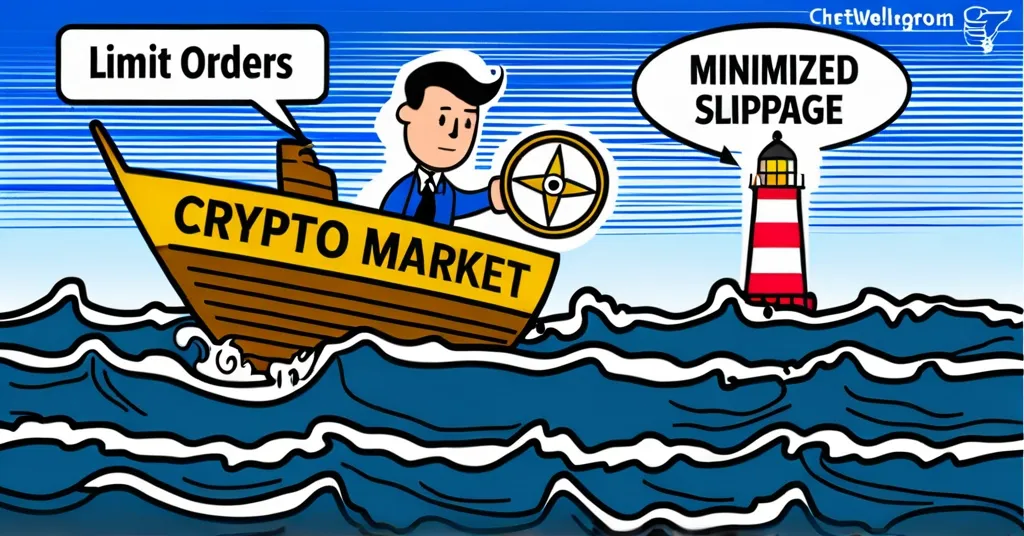Mastering Crypto Slippage: Strategies to Navigate Volatile Markets

Understanding Crypto Slippage: A Trader’s Comprehensive Guide
Ever tried to buy a crypto asset at one price, only to find out you’ve paid more? That’s slippage, and it’s a common hurdle in the world of cryptocurrency trading. Whether you’re a Bitcoin enthusiast or exploring altcoins, understanding slippage can turn the tables in your favor.
- Crypto Slippage: The difference between expected and actual trade price.
- Causes: Low liquidity and high market volatility.
- Types: Positive and negative slippage.
- Exchanges: Varies between centralized and decentralized platforms.
- Minimization: Strategies like limit orders and adjusting tolerance settings.
Slippage in the crypto world is the gap between the price you expect to pay for a trade and the price at which it’s actually executed. This difference can be a significant factor in the volatile cryptocurrency market, where prices can shift dramatically in seconds. For example, if you’re aiming to buy Bitcoin at $30,000 and end up paying $30,100, that’s $100 of negative slippage hitting your wallet.
The main culprits behind slippage are low liquidity and market volatility. In markets with low liquidity, there aren’t enough buyers or sellers to fill large orders at the desired price, causing the price to move. High volatility, a common feature of the crypto market, can amplify this effect, making it a double-edged sword for traders.
Slippage comes in two flavors: positive and negative. Positive slippage is like finding a hidden treasure when you get a better price than you expected. For instance, if you planned to buy Ethereum at $2,000 and snagged it at $1,980, you’ve just experienced positive slippage. On the flip side, negative slippage is the crypto market’s way of saying, “Surprise! Here’s an extra fee you weren’t expecting!” when you get a worse price than anticipated.
The impact of slippage differs between centralized exchanges (CEXs) and decentralized exchanges (DEXs). On CEXs, any slippage amount is typically retained by the exchange, adding to their revenue. In contrast, on DEXs, negative slippage benefits liquidity providers, who stake their assets in liquidity pools (reserves of tokens locked in a smart contract to facilitate trading). This highlights the unique dynamics of decentralized finance (DeFi) and how it redistributes what would be considered a ‘loss’ in traditional trading.
On centralized platforms, factors like market volatility, exchange fees, and large orders in low liquidity markets can cause slippage. Decentralized exchanges face their own set of challenges, including trading volume, block confirmation times, and overall liquidity. Understanding these factors is crucial for traders navigating both types of exchanges.
To minimize slippage, traders employ several strategies. Limit orders are a go-to move, allowing you to set a specific price at which you’re willing to buy or sell, thus avoiding the pitfalls of market orders. Trading on exchanges with low fees can also help, as can adjusting slippage tolerance settings on DEXs, giving you more control over how much slippage you’re willing to accept. For instance, on platforms like Uniswap, you can adjust your slippage tolerance to better manage your trades.
In the realm of decentralized finance, liquidity providers face the additional risk of impermanent loss, which can be exacerbated by slippage. Impermanent loss occurs when the price of tokens in a liquidity pool changes compared to when they were deposited, and slippage can amplify this effect. This is a reminder that while slippage is a common trading hurdle, it’s part of a broader ecosystem of risks and rewards in the crypto space.
By understanding and managing slippage, traders can better navigate the turbulent waters of cryptocurrency markets. Whether you’re a Bitcoin maximalist or exploring the fringes of altcoin territory, mastering slippage is a step towards smarter, more informed trading.
From a Bitcoin maximalist perspective, slippage can be particularly frustrating when trading the flagship cryptocurrency, given its high volatility and the impact on large trades. Bitcoin’s liquidity is generally higher than many altcoins, but even then, slippage can occur, especially during times of significant market movement or on less liquid exchanges.
While slippage often seems like a nuisance, it’s worth considering the potential benefits. For instance, positive slippage can lead to unexpected gains, and on DEXs, negative slippage can reward liquidity providers, contributing to the overall health of the DeFi ecosystem. This raises the question: Do you think the risks of slippage outweigh the potential rewards in crypto trading?
Key Takeaways on Crypto Slippage and Trading
- What is crypto slippage?
Crypto slippage is the difference between the expected price of a trade and the price at which it is actually executed.
- What causes crypto slippage?
The main causes of crypto slippage are low liquidity and market volatility.
- What are the types of crypto slippage?
There are two types: positive slippage, which benefits the trader by executing at a better price, and negative slippage, which results in a worse execution price.
- How does slippage differ between centralized and decentralized exchanges?
On centralized exchanges, slippage amounts are retained by the exchange. On decentralized exchanges, negative slippage benefits liquidity providers.
- What factors contribute to slippage on centralized exchanges?
Market volatility, exchange fees, and large orders in markets with low liquidity can cause slippage on centralized exchanges.
- What factors contribute to slippage on decentralized exchanges?
Trading volume, block confirmation time, and liquidity are key factors causing slippage on decentralized exchanges.
- How can traders minimize crypto slippage?
Traders can minimize slippage by using limit orders, trading on exchanges with low fees, and adjusting slippage tolerance settings on decentralized exchanges.



